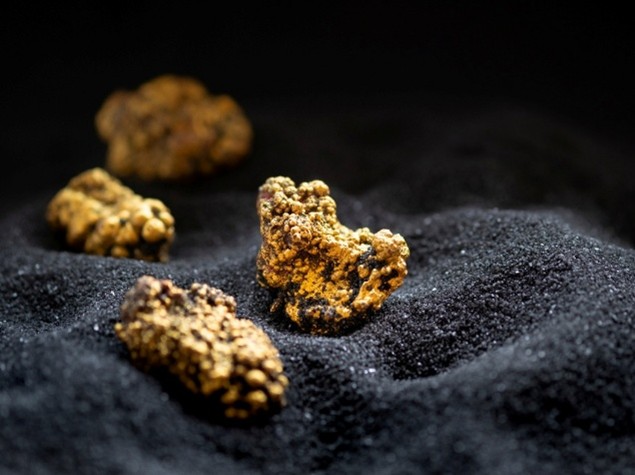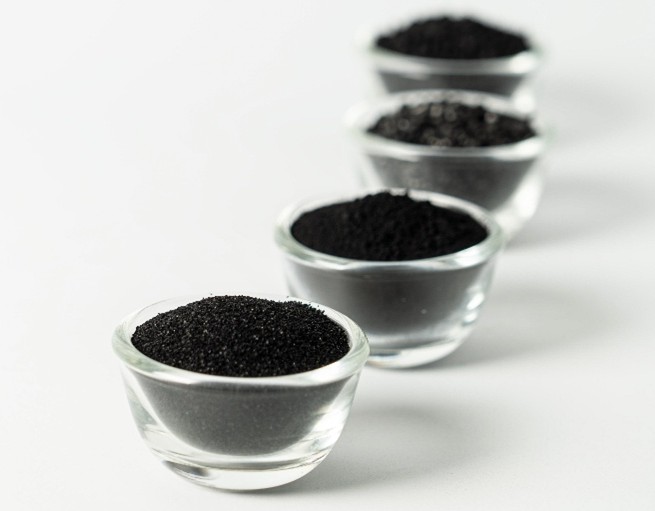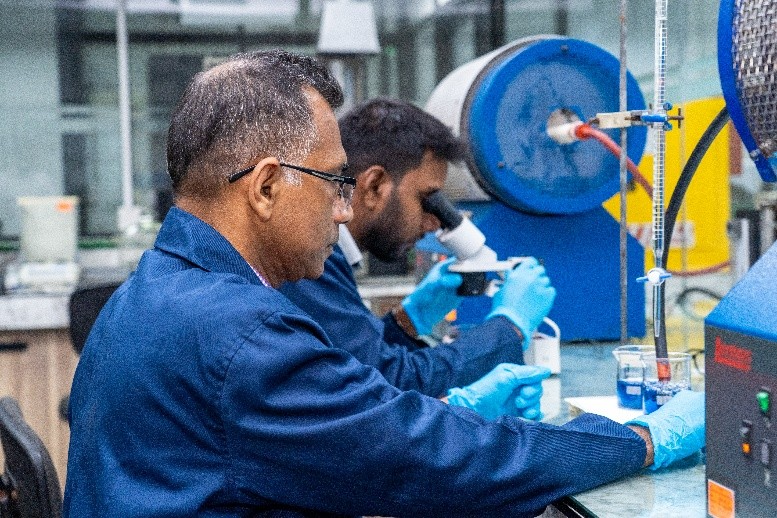In gold recovery operations, even the smallest details can make a big difference. From the equipment and materials to the processes used, every choice impacts overall profitability. One key factor that’s often overlooked is the efficiency of activated carbon, a critical element that can ultimately determine the success or failure of a recovery operation.

Using activated carbon for gold recovery is a well-established practice, especially in CIP (Carbon-in-Pulp) and CIL (Carbon-in-Leach) processes. However, what separates high-performing operations from the rest isn’t just the use of carbon but it’s the efficiency of the carbon. In fact, the quality and performance of activated carbon can be the deciding factor between marginal gains and optimal gold recovery.
Coconut shell-based activated carbon has become an increasingly popular choice in gold recovery operations, due to its high hardness, adsorption capacity, and strong resistance to attrition. However, even the highest quality carbon won’t deliver results without the right handling, including proper processing, effective regeneration, and usage strategies.
Let’s take a closer look at how carbon efficiency can significantly influence the success of your gold recovery process.
Understanding the Role of Activated Carbon in Gold Recovery

Activated carbon plays a vital role in gold extraction, acting as the medium that adsorbs dissolved gold from the leached solution. After gold is extracted from ore using a cyanide solution, it needs to be separated and collected, and that’s where activated carbon comes into play. Due to its porous structure and large surface area, activated carbon effectively adsorbs gold-cyanide complexes, making it possible to recover the gold in later stages of processing. However, the effectiveness of this step depends entirely on the efficiency of the carbon itself. If the carbon is of low quality or not properly maintained, it can result in poor adsorption performance, increased gold losses, and ultimately reduced profitability.
Why Carbon Efficiency Matters
When it comes to gold recovery, carbon efficiency is about how effectively activated carbon does its job, adsorbing gold from the leached solution. This includes how quickly it captures gold (adsorption rate), how much gold it can hold (loading capacity) and how well it maintains quality over multiple cycles before degrading (regeneration performance).
If the carbon underperforms in any of these areas, the entire recovery process suffers. And in an industry dealing with high-value materials like gold, even small inefficiencies can translate into significant financial losses. Here’s how inefficiencies show up in real-world gold recovery:
- Increased gold losses in tailings
- More frequent need for carbon replacement
- Higher operational costs
- Lower recovery rates
- Extended processing times
On the other hand, high-efficiency activated carbon means better performance across the board, higher gold yield, reduced costs, and a more efficient operations.
Key Characteristics of High-Efficiency Activated Carbon
Not all activated carbon delivers the same performance. For gold recovery operations to run efficiently and profitably, the carbon used must meet certain performance standards. Here are the top characteristics to look for:
1. High Adsorption Capacity
This refers to how much gold the carbon can hold before it needs to be regenerated. The higher the capacity, the more efficient the cycle, allowing for fewer carbon replacements and better overall yield.
2. Fast Adsorption Kinetics
Carbon that can quickly adsorb gold from the leached solution helps shorten processing time and keeps operations moving efficiently, especially in high-throughput plants.
3. Strong Mechanical Strength and Hardness
Activated carbon is constantly moving through tanks and systems. If it’s not mechanically robust, it can break down easily under pressure. Low-strength carbon leads to excessive fines, which escape with tailings and reduce gold recovery.
4. Reliable Regeneration Performance
Good quality activated carbon should withstand multiple thermal regeneration cycles with minimal loss in efficiency. This ensures long-term cost-effectiveness and consistent performance across cycles.
5. Low Attrition Loss
Attrition happens when carbon breaks down into smaller particles or dust. High attrition rates not only reduce usable carbon but also clog equipment and create operational delays.
Choosing high-efficiency activated carbon isn’t just about short-term gains, it’s a long-term investment in the performance, sustainability, and profitability of your gold recovery process.
The Link Between Activated Carbon and Gold Yield
The efficiency of your activated carbon has a direct impact on how much gold you can recover. Simply put, the better your carbon performs, the more gold you extract from each batch of ore — without needing to scale up equipment or extend processing times.
When carbon has a higher gold loading capacity, it captures more gold from the solution before needing regeneration. This translates into more gold recovered per tonne of ore, less gold lost in tailings and higher revenue per processing cycle.

Even a small improvement, say 5% – 10% in carbon efficiency, can lead to major gains. When applied across hundreds or thousands of tonnes of ore, these improvements translate into substantial increases in overall gold yield and profitability.
Mistakes that Lower Carbon Efficiency and How to Avoid Them
Even high-quality activated carbon can underperform if not handled correctly. Several common operational mistakes can significantly reduce its effectiveness, often without immediate warning signs. Here are some frequent pitfalls and how to prevent them:
- Over-regeneration: Excessive heat during regeneration can damage the carbon’s pore structure, reducing its adsorption capacity.
- Under-regeneration: Incomplete regeneration leaves organic contaminants behind, which block active sites.
- Chemical fouling: Oils, grease, or other organics in the solution can coat the carbon and reduce adsorption.
- Poor carbon screening or handling: Broken or worn-out screens lead to carbon fines escaping into tailings, taking gold with them.
- Fluctuating pH or temperature: Inconsistent conditions in the adsorption tanks can weaken carbon or disrupt gold binding.
These issues may seem minor, but over time they compound and can lead to substantial losses.
Best Practices to Maximise Activated Carbon Efficiency
To get the most out of your activated carbon and boost your gold recovery in the process, it’s important to follow a few key best practices. These strategies help preserve carbon performance, reduce losses, and improve overall plant efficiency:
- Use high-quality coconut shell-based carbon for better adsorption and durability.
- Maintain stable pH and temperature to protect carbon performance.
- Test carbon activity regularly for early detection of performance issues.
- Regenerate carbon properly to restore efficiency without damage.
- Keep the solution clean to avoid fouling from oils or contaminants.
- Handle carbon carefully to reduce attrition and loss of fines.

These practices might seem insignificant on their own, but when applied consistently, they can deliver significant gains in gold recovery and operational profitability.
Environmental and Economic Impact
Efficient activated carbon isn’t just a smart business choice, it’s also an environmentally responsible one. Better adsorption means less cyanide usage, lower carbon losses and fewer emissions during regeneration, all of which contribute to a smaller environmental footprint. Key economic benefits include:
- Lower cost per ounce of gold recovered
- Reduced downtime and smoother operations
- Smaller carbon inventory needs
- Less strain on equipment and maintenance budgets
In the competitive world of gold recovery, every small improvement adds up and activated carbon efficiency is one detail that can make a big difference.
It’s not just about using activated carbon, but about choosing the right type and managing it effectively. When properly selected and maintained, high-efficiency carbon, especially coconut shell-based carbon, can significantly boost recovery rates and reduce operational costs.
In the end, the real question isn’t whether you should prioritise carbon efficiency, but whether you can afford not to.






